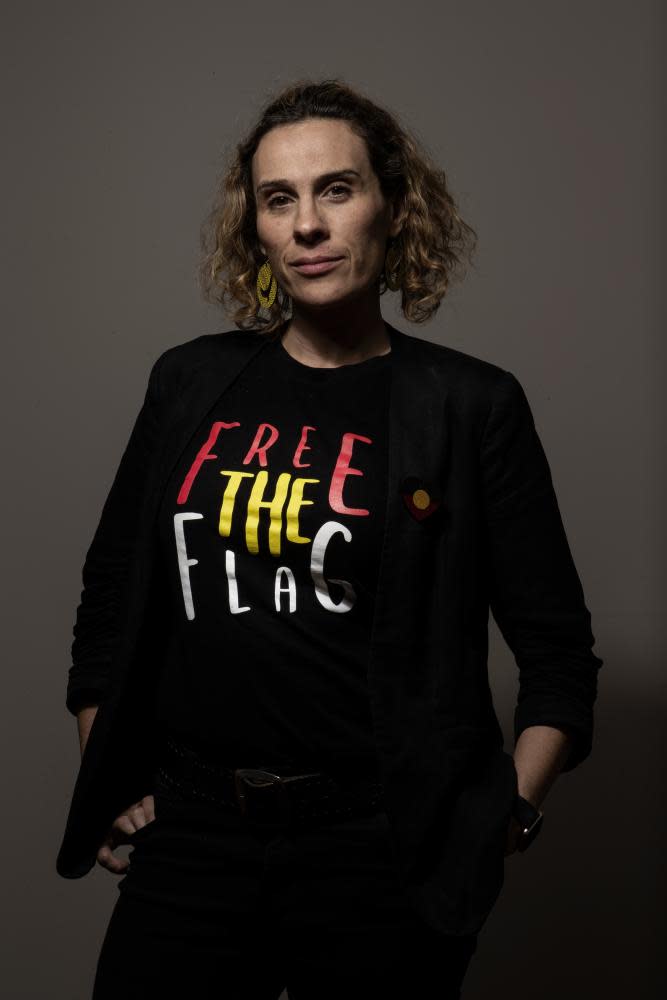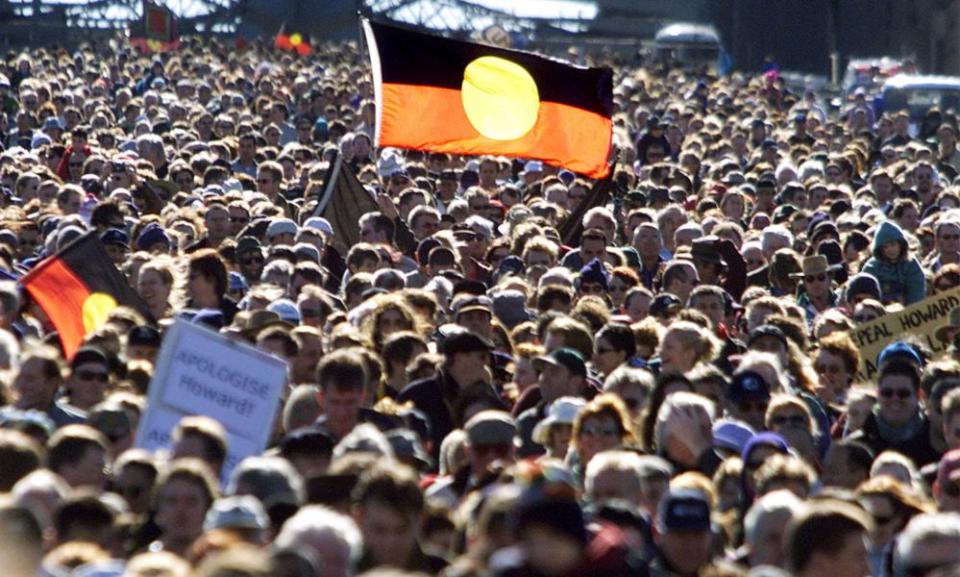Deal to ‘free’ Aboriginal flag welcomed – but questions remain
Campaigners say it is a relief that private companies are now ‘out of the picture’ but want to know how future custodianship will operate
Campaigners who fought to “free” the Aboriginal flag have welcomed the federal government’s $20m deal to buy out the private companies who held exclusive licences over its use and charged Aboriginal community groups for permission.
But they say questions remain about its future custodianship, now that copyright rests with the commonwealth, and are asking exactly how much public money the non-Indigenous businesses were paid to relinquish their control.
Related: Australian government buys copyright to Aboriginal flag in $20m deal
“I feel like this is as good as we’re going to get in terms of freeing the Aboriginal flag,” Laura Thompson, convenor of the #freetheflag campaign, said on Tuesday.
“It is a significant amount of money, but we paid $30m for the boxing kangaroo. Can you compare the significance of the Aboriginal flag to the boxing kangaroo?
“My grandkids, my great-grandkids, will have the Aboriginal flag in their lives, uniting them and supporting their culture and making them feel safe in community.”
On Monday, the federal government announced that after more than two years of “extremely complicated” negotiations, it had struck a deal to acquire copyright from the flag’s designer, Luritja artist Harold Thomas, and make it “free” for public use.

Previously, Thomas’s sole copyright allowed him to grant licences to other parties to make copies of the flag, or refuse permission entirely. In 2018, he gave an exclusive licence to a non-Indigenous business called WAM Clothing, who raised the ire of many by issuing infringement notices to small non-profit Aboriginal organisations as well as the AFL and NRL, for their past use of the design.
WAM Clothing is part-owned by Ben Wooster, whose previous company, Birubi Art, was fined a record $2.3m by the federal court after finding it had breached consumer law by selling fake Aboriginal art.
The #freetheflag movement began after Thompson’s business, Clothing the Gaps, was served with a cease and desist notice from WAM.
Thompson said it was a relief that private companies were now “out of the picture” but some questions remained.
“The fact that the Aboriginal flag was controlled, and privately owned, is just absurd,” she said.
“The question is now, with this payout, are they going to pay the fine back to the ACCC? We’ve got the Aboriginal flag back in the public domain, now we [have to] start to look at how did we end up in this mess in the first place, in a copyright tangle with the flag?
“It really has to come back down to when the government proclaimed the flag back in 1995. They should have made sure that they bought the copyright, and made sure that it wasn’t under copyright at that time before they proclaimed it as an official flag of this country.”
In 1995, the governor general proclaimed it along with the Torres Strait Islander flag. Other claimants came forward asserting they were the artist behind it but in 1997 the federal court officially recognised Thomas as the sole author. That meant he could assign licences.
By 2019, amid mounting distress and confusion over who was able to use the design freely, a parliamentary inquiry was set up to look into the copyright and licensing arrangements. Its final report labelled WAM Clothing’s actions as “heavy-handed”.

Labor senator Malarndirri McCarthy, who chaired the Senate select committee examining the Aboriginal flag, said she intended to seek answers about how future arrangements would operate.
“I’d like to commend the people who gave evidence and advocated to help resolve this issue,” McCarthy said. “I look forward to examining the details around this deal through Senate estimates next month, in particular the copyright and custodianship of the flag.”
The minister for Indigenous Australians, Ken Wyatt, told ABC Radio on Tuesday that “the benefits in the long term far outweigh what we expended”.
“It’s about giving back the flag to be freely used,” he said.
“Harold [Thomas] said he wanted the flag to be flown with dignity. It should be always be respected and from that first moment when it was flown in Adelaide, and then later at the tent embassy, it’s been highly valued. And our people do respect the three colours.”
Thomas made a rare public statement on Monday and was photographed signing the deal as part of the government’s announcement.
“I hope this arrangement provides comfort to all Aboriginal people and Australians to use the flag, unaltered, proudly and without restriction,” he said. “I am grateful that my art is appreciated by so many, and that it has come to represent something so powerful to so many.”

 Yahoo Movies
Yahoo Movies 
